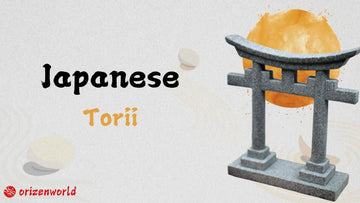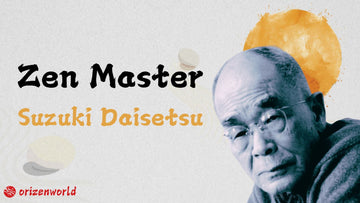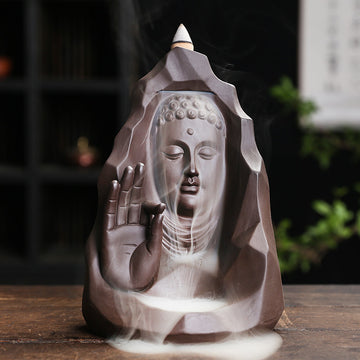As a fan of Japanese culture, I've watched many iconic anime such as Spirited Away and Inuyasha, and I also love traveling to Japan. When I first encountered Japanese culture, I discovered Torii, a unique cultural symbol that can be found across Japan, from shrines and temples to roadsides and mountains.
The Torii gate is widely admired around the world, and people often turn it into Torii posters, statues, pendants, and more. Through my studies of Japanese culture, I’ve learned a lot about the significance of the Torii gate. In this article, I will share with you everything you need to know about the Torii gate, its origins, meaning, and its presence in both traditional and modern culture.
Torii is a symbolic structure of Shinto shrines, typically located at the entrance. It consists of two vertical pillars and two horizontal beams, resembling the Chinese paifang (archway).

The Torii gate marks the boundary between the human world and the divine realm, serving as a threshold to sacred spaces.
The color and materials of Torii gates vary, but red and wood are the most common. The red color is believed to ward off evil spirits and bring good fortune. Torii gates play a significant role in Shinto beliefs, symbolizing purity and the spiritual transition from the mundane to the divine.
The origins of the Torii gate are shrouded in myth and speculation, with one popular legend tied to the sun goddess Amaterasu. According to the myth, Amaterasu, angered by her brother, hid herself in a cave, causing the world to fall into darkness.
To bring light back to the world, the people constructed a Torii gate and placed a rooster on top, hoping that the curiosity of Amaterasu would cause her to peek out and restore daylight. This myth symbolically associates the Torii with the idea of light, renewal, and a connection between the human and divine realms.
In Japanese, the word "とり" (tori) means bird, but it can also refer to a rooster, which adds another layer to the meaning of Torii, literally translating to "the place where a rooster is placed." This reinforces the idea that Torii serves as a portal to the divine world, where the rooster's crow marks the return of light and spiritual presence.
The evolution of Torii gates over time reflects their significance in Japanese culture. Initially, simple wooden structures, they gradually became more ornate and diverse in design, with varying styles, colors, and materials, reflecting the development of Shinto beliefs and practices. Today, Torii gates are recognized worldwide as iconic symbols of Japan's spiritual heritage.
The Torii gate holds immense cultural significance in Japanese art, architecture, and identity. It is not just a physical structure, but a symbol of the spiritual connection between the human world and the divine.
In the classical work The Tale of Genji, the Torii gates symbolize reverence and prayer to the gods. The gates represent the boundary between the sacred and the mundane, and characters in the story rely on divine protection, often depicted in the form of shrines and Torii gates.
In the realm of art, particularly ukiyo-e, Torii gates are recurring motifs. These woodblock prints often portray scenes of pilgrimages or religious ceremonies, with Torii gates marking the entrance to sacred spaces.

Artists like Katsushika Hokusai have used the imagery of Torii gates to convey a sense of spirituality and reverence, blending the natural beauty of Japan with its religious landmarks.
Torii gates are also architectural marvels, with Fushimi Inari Taisha's thousands of vermilion gates being one of the most famous examples. These gates form a mesmerizing pathway up Mount Inari, creating a powerful visual and spiritual experience for visitors. The architectural presence of Torii gates is integral to Japan's identity, representing both physical and metaphysical thresholds.

The Torii gates at Fushimi Inari Shrine are famous for their thousands of vermilion gates, forming a sacred path that symbolizes the way to the divine, making it one of Japan's most iconic landmarks.
Torii gates hold great significance in Shinto rituals and ceremonies, symbolizing the boundary between the human and the divine realms. When entering a Shinto shrine, passing through a Torii gate is seen as entering a sacred space, a physical and spiritual transition from the mundane to the divine.
Each shrine, whether it is called a "Jingu" (shrine), "Taisha" (grand shrine), or "Gu" (shrine), is often marked by its Torii gate at the entrance, emphasizing the sacredness of the space and the protection it offers from evil spirits.
During traditional Shinto ceremonies, Torii gates play an essential role in rituals. The act of bowing before passing through the gate is a gesture of respect and reverence for the deities enshrined within. In some cases, worshippers may also make offerings or prayers at the base of the gate before entering, further reinforcing the connection between humans and the divine world.
At many shrines, it is common for people to pray while standing before the Torii gates, joining their hands in prayer and offering wishes for health, success, or guidance. The Torii thus not only serves as a physical marker but also as a symbolic gateway for spiritual connection and divine blessing in Japanese tradition.
Torii gates come in various shapes, each with its unique design and symbolism. In the following, I will introduce the main types of torii and their meanings within Japanese culture, offering insight into their significance and role in spiritual practices.

Myōjin Torii (明神鳥居):
This is the most common and traditional type of Torii gate, typically found at Shinto shrines dedicated to deities. It features two vertical posts and two horizontal beams. The top beam is slightly curved upwards, giving it a simple, iconic design.
Sanno Torii (山王鳥居):
This type of Torii is usually associated with Sanno shrines, which are dedicated to the deity of Mount Hie. The design is slightly different from the traditional Torii, with distinct features such as additional horizontal beams or specific proportions, reflecting the significance of the deity.
Mihashira Torii (三柱鳥居):
Mihashira Torii features a unique design where three vertical posts are used, which symbolizes the connection between heaven, earth, and humanity. It is often seen at particularly sacred or important shrines.
Karahafu Torii (唐破風鳥居):
The Karahafu Torii has a distinctive design characterized by a curved, sweeping top beam, resembling the "kawara" (roof tiles) style from Chinese architecture. This design reflects the cultural exchange between Japan and China, and is typically found at high-status shrines.
Naikugen Torii (内九番鳥居):
This type of Torii gate is used in specific regional contexts and may have smaller or more subtle differences in its structure. It is commonly found in certain parts of Japan and is often used at smaller, local shrines.
Nune Torii (布鳥居):
The Nune Torii is a unique type of Torii made from cloth, rather than wood or stone. This design is typically used in temporary shrines or festivals and is more flexible and portable compared to traditional Torii gates.
What is the meaning of Torii in Japanese culture?
Torii gates are significant spiritual symbols in Japan, representing the connection between the human world and the divine. They are an invitation to enter a sacred space and seek spiritual purification and blessings.
Are there different types of Torii gates?
Yes, there are several types of Torii gates, including the Myōjin Torii, Kamigamo Torii, and Fushimi Torii. Each type has a unique design and is associated with different Shinto traditions.
Why are there sometimes fox statues near Torii gates?
Fox statues, particularly near the Torii gates at Fushimi Inari Taisha, are believed to be messengers of Inari, the kami (spiritual being) associated with the shrine. The fox is considered a guardian and a bringer of good fortune.








